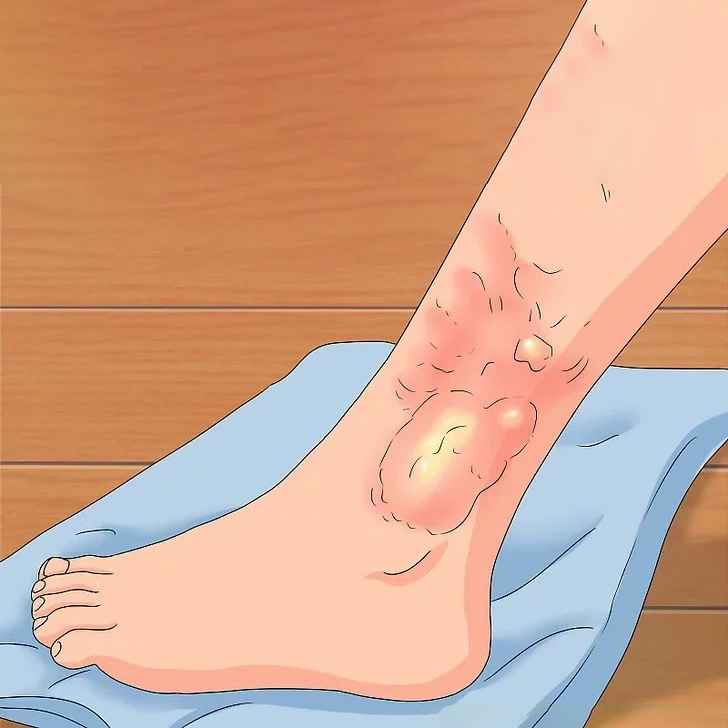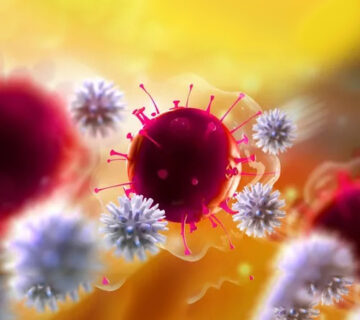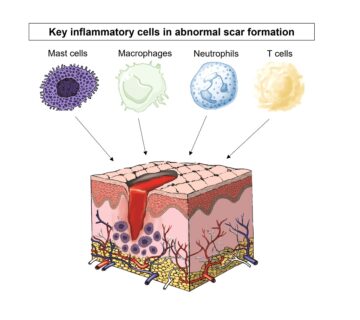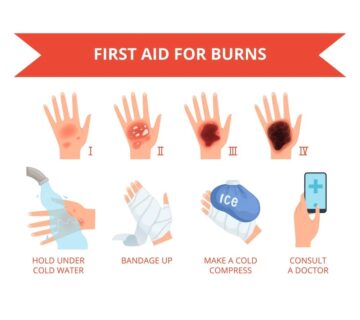Blister
A blister, also known as a blister by dermatologists, is a swelling of the skin that is filled with fluid. Blisters are usually filled with clear fluid, blood clots, and plasma. Sometimes they may be filled with blood or mucus and look like a bridge. Blisters are usually caused by friction, burns, cold, infection, or chemical exposure. Blisters can appear in different parts of the body.
Blisters can have many causes
Causes of blisters include burns from heat, electricity, chemicals, sunlight, or friction. Also, cold injuries caused by exposure to extremely cold temperatures or frostbite. The bite of some spiders, for example, the bite of an isolated brown spider; The symptoms of the isolated brown spider bite are: reddening of the skin followed by blistering at the bite site, pain, itching and an open wound with tissue destruction (necrosis) that develops within a few hours to three to four days after the bite. will be The wound may take several months to heal. and severe compression of the skin between two hard surfaces, such as when your finger slips, which can cause blisters if blood vessels are damaged. The infection can also cause single or multiple blisters. Another factor that causes blisters is inflammation.
Blistering due to contact with hot objects or hot liquids
One of the main causes of blisters is when the skin is damaged by contact with hot objects or hot liquids such as hot oil, acid and boiling water. First-degree inflammation does not cause blisters, only the skin becomes red and there is swelling, pain, and mild burning. But in secondary inflammation, the entire outer layer of the skin is destroyed and blisters of different sizes are formed on the surface of the skin. This type of wound may require care and treatment for up to three weeks. In third-degree inflammation, the entire subcutaneous layer of the skin, muscles, blood vessels, nerves, and even bones are destroyed, and the skin becomes charcoal white and red, tending to black and without pimples.
Necessary measures to prevent blisters
Before taking any action on the burn, try to cool the burned area to prevent blistering and further damage to the skin and other areas under the skin. It is better to use drinking water. Immediately run the burn under cold water for 10 to 30 minutes or place it in a bowl of water.
Suffocation caused by blisters in the respiratory tract
If the burn is in the airways and respiratory tract, the victim should be encouraged to drink small, continuous sips of cold water to reduce blistering and suffocation. Using a salt water solution with a concentration of half a teaspoon of salt in a glass of chilled boiled water is also useful for controlling skin blisters. Washing the blisters every 2 hours with this solution can effectively reduce the size of the blisters and reduce the pain and irritation.
The importance of blister treatment
The importance of blister treatment is that a large amount of body water is removed from the blood circulation and accumulates in the blister, which can cause shock and anesthesia if the number of blisters is large or large. Another point is that the fluid of blisters and damaged skin is a suitable place for various microbes to enter and grow. Therefore, if the blisters are not treated properly, the person will suffer from infection and the resulting complications. The most basic treatment for burned blisters is to avoid touching the blisters. Never create blisters and do not peel off the skin if it appears. If a blister develops on a sensitive part of the body or interferes with a person’s activities, pump the liquid into it with a sterile syringe as follows. Of course, if you have seen the training on how to use a syringe.
Care during work
When working with tools that cause blisters, you can prevent blisters by protecting your hands by wearing thick gloves. Avoid contact with plants or substances that cause blisters, such as ivy, oak, or sumac, with people who have a blister infection. Such as: chicken pox viral diseases, genital herpes and bacterial skin infection or yellow fever.
Does the blister go away by itself?
Most blisters do not require treatment and will go away on their own, as the top layer of skin often prevents infection. You can bandage it, which will cause the liquid in the blister to be absorbed by the tissue and the blisters will disappear. Never puncture a blister unless it becomes very painful, as the skin over it prevents infection and if you remove the skin, it is prone to infection. Even blisters caused by infection are temporary but need treatment. It is also important to note that some blisters, such as pemphigus, have no cure, but can be controlled with medication.
Doctor’s prescription for blister treatment
The first blister treatments prescribed by a doctor include steroid creams to treat skin sores and warts and antibiotics to treat skin infections. and get adequate treatment: for example, when the sores are so painful that they interfere with sleep or daily activities. In addition, lesions that spread suddenly, do not heal within 3 weeks, the presence of lesions on the face and genital area, skin infections and observing symptoms such as fever and purulent discharge from the bladder, when the lungs, eyes and the nose is painful. And inflammation and lesions cause the destruction of the oral mucosa and digestive system. Among the different types, age below 5 years and above 55 years is important due to physical weakness and inability to bear burn injuries.







بدون دیدگاه